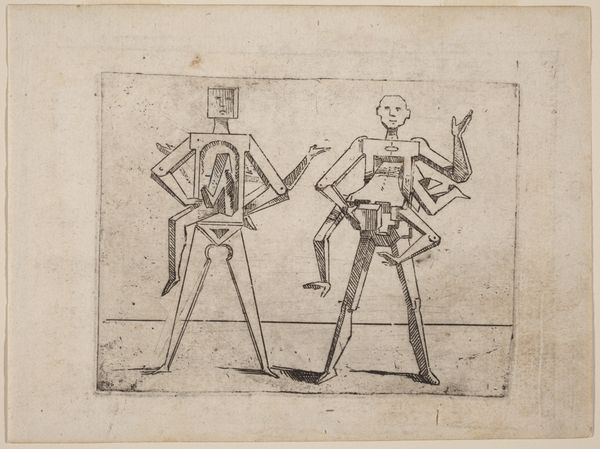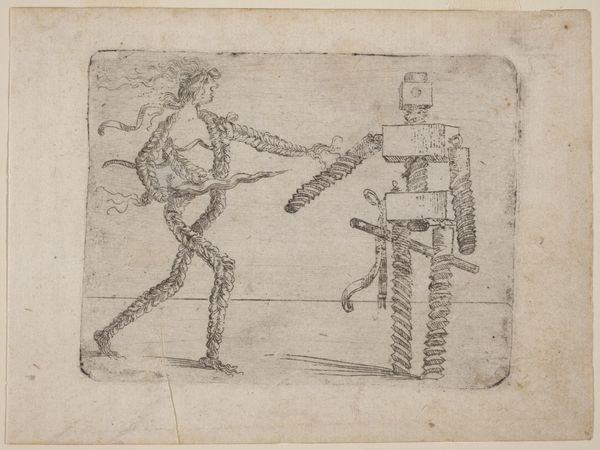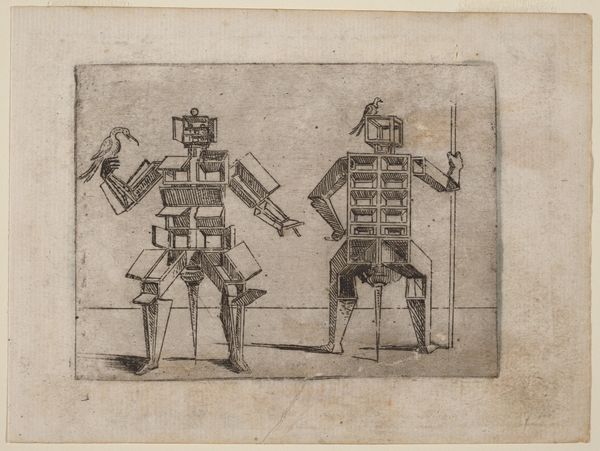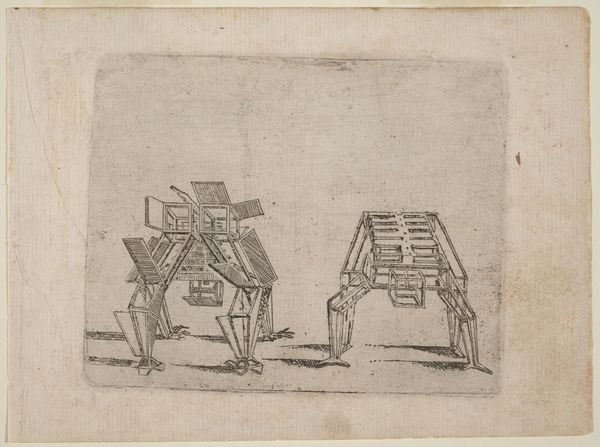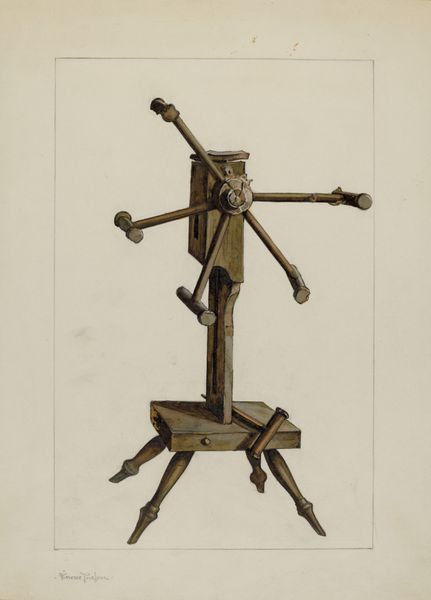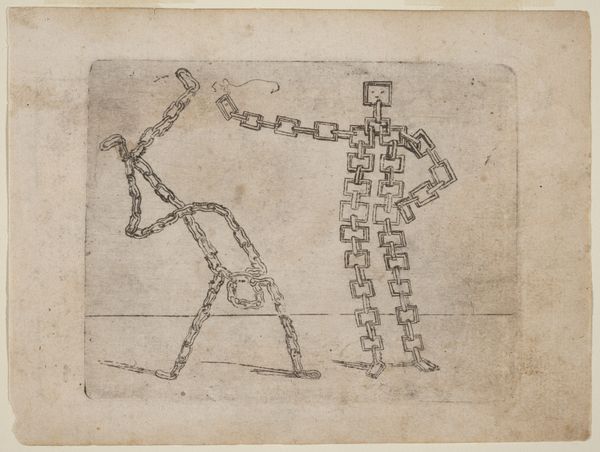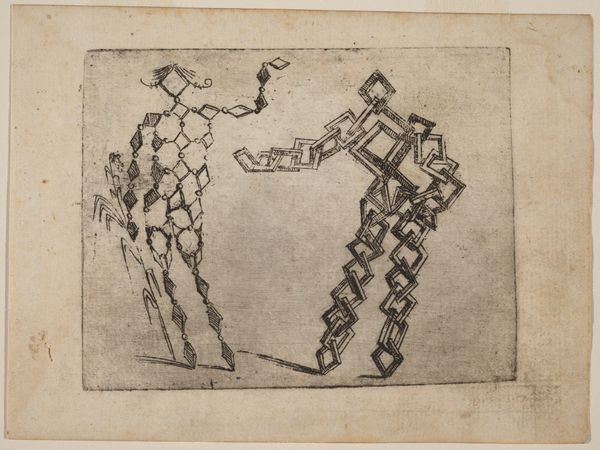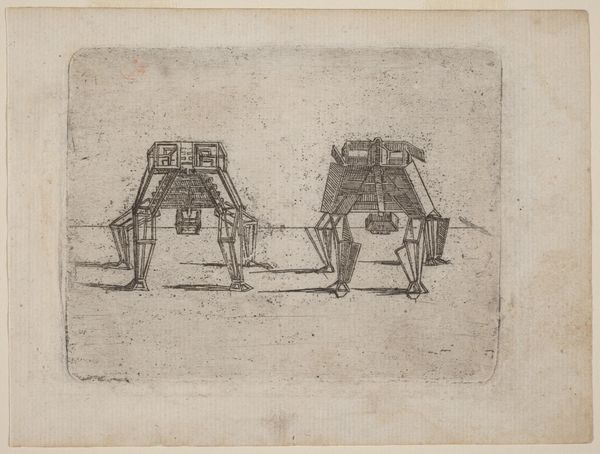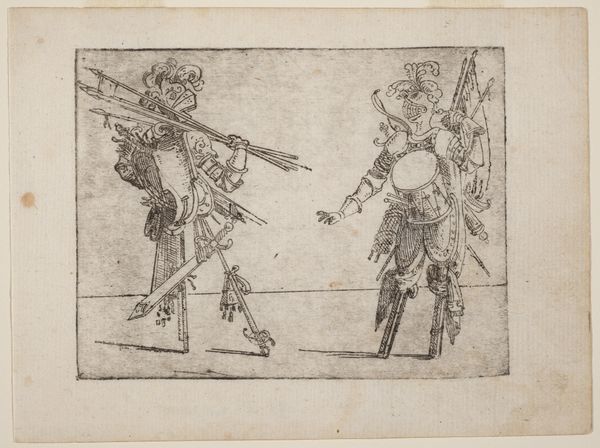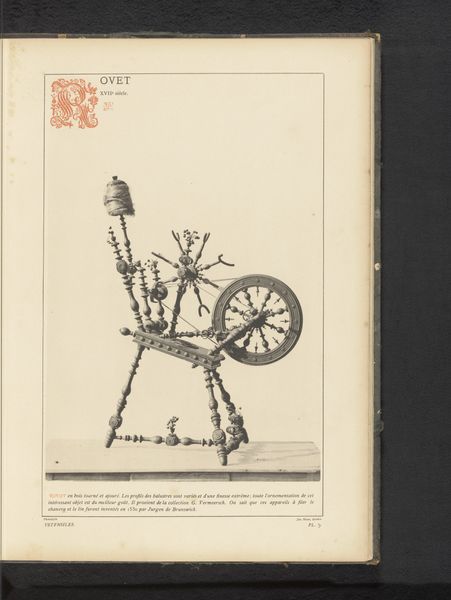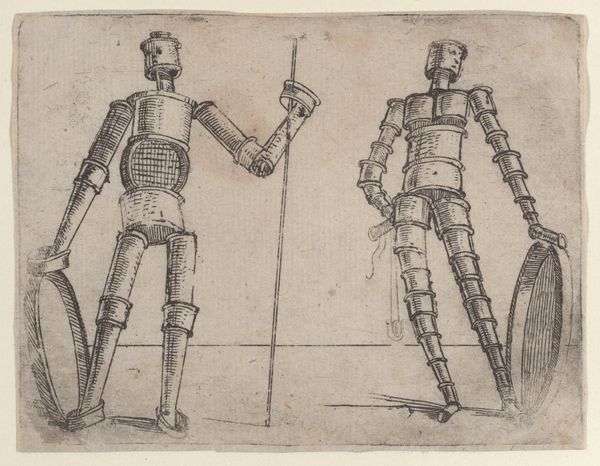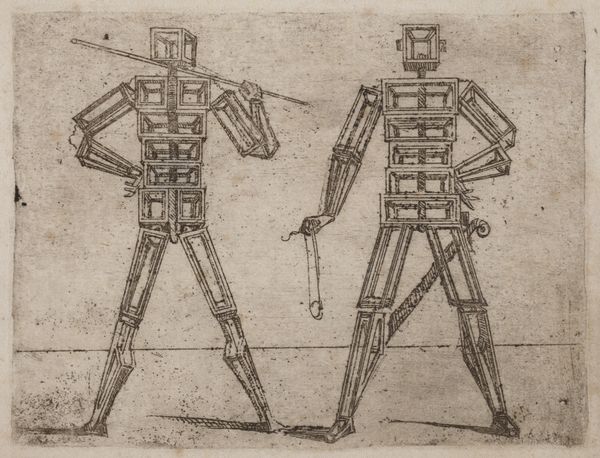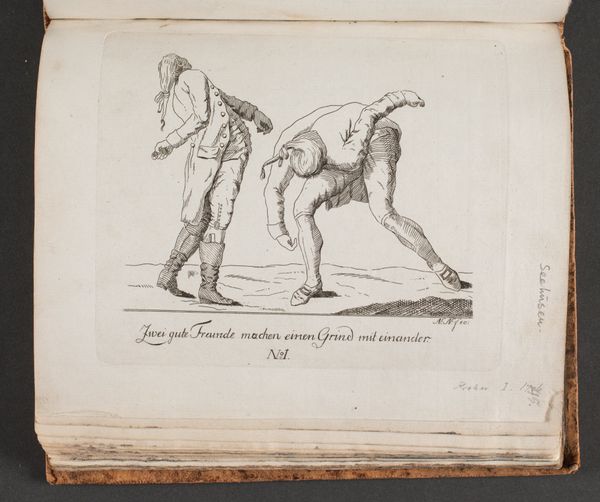
print, etching
# print
#
etching
#
mannerism
#
figuration
#
geometric
Copyright: National Gallery of Art: CC0 1.0
Curator: Here we have an etching entitled "From 'Bizzarie di varie Figure,'" created around 1624 by Giovanni Battista Bracelli. Editor: My first impression is that it looks like an architectural breakdown of the human form. Stark, slightly unsettling, and geometric in its simplicity. Curator: The Mannerist style certainly lends itself to that interpretation. Bracelli deconstructs figuration through the use of these precise geometric shapes. It’s fascinating how he maintains a sense of the human despite this radical fragmentation. Editor: Yes, but I see more than mere formal experimentation here. Consider the context: the early 17th century was a period of immense social and political upheaval. Perhaps these bizarre figures represent the fracturing of societal norms, the breakdown of established hierarchies? Are these the effects of war or perhaps revolution depicted in abstracted form? Curator: An interesting thought, but I believe we can understand this work perfectly well by looking at its internal elements. The relationship between the figures, their almost precarious balance, and the interplay of lines creates a dynamic tension that’s entirely self-referential. Bracelli is exploring the limits of representation itself. Editor: But isn’t all art inherently a product of its time? To divorce it from the sociopolitical realities is to strip it of its deeper resonance. Look at the figure sprawled on the ground—is that not a depiction of subjugation? Curator: While your reading offers a potentially interesting interpretation, it’s important to avoid imposing contemporary anxieties onto historical works. Focus instead on what the artist has manifestly presented through the visual language of composition, form, and line. It's a masterful study in aesthetic reduction, where shapes supplant our expectation of typical figurative depiction. Editor: And that reduced aesthetic might also reflect the reduction of humanity under oppressive regimes! We must remain critical when viewing such art, questioning what it omits and whose voices remain unheard. Curator: Perhaps we simply have fundamentally divergent perspectives, which may enrich appreciation for Bracelli's piece. Editor: Indeed. Ultimately, both approaches provide viable interpretive frameworks to decode the piece.
Comments
No comments
Be the first to comment and join the conversation on the ultimate creative platform.
